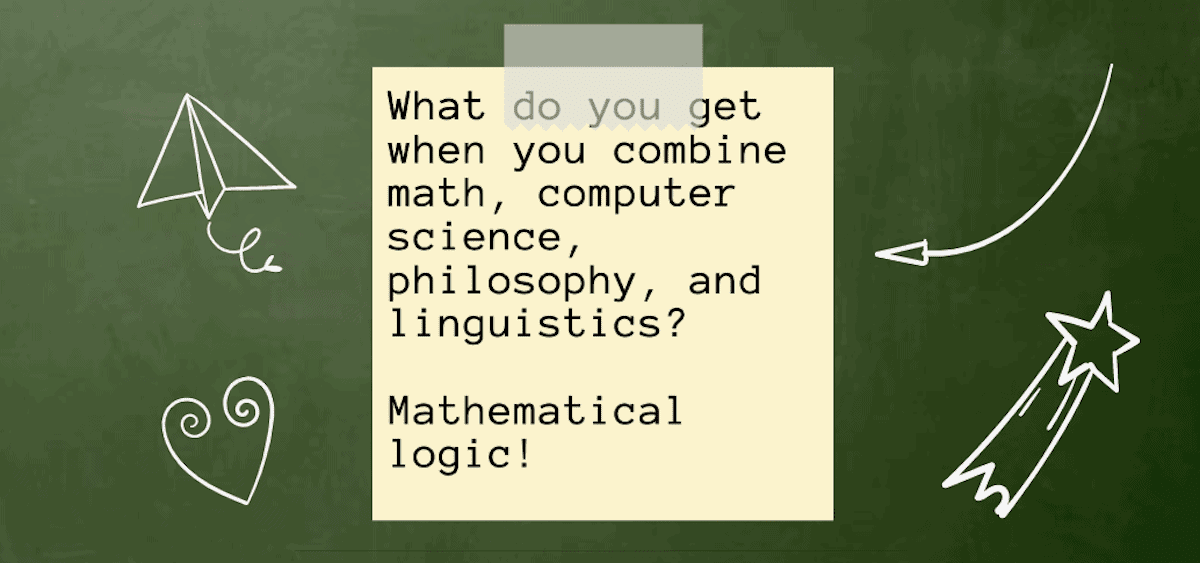Teaching kids to think logically

I read an incredibly interesting article entitled, Kids Should be Taught to Think Logically. I couldn’t agree more.
symbolic logic
noun
: a science of developing and representing logical principles by means of a formalized system consisting of primitive symbols, combinations of these symbols, axioms, and rules of inference
As noted on Introduction to Logic on Lander University’s site
Symbolic logic is by far the simplest kind of logic—it is a great time-saver in argumentation. Additionally, it helps prevent logical confusion.
What is Symbolic Logic Useful For?
In summary: They are very much like the logic puzzles in a logic course, but they are written in prose, which makes them more accessible to readers not familiar with formal logic. In summary, symbolic logic is a course that fulfills a quantitative reasoning requirement for incoming freshmen at a university, and can be used for studying advanced math, as well as for designing logic circuits and for programming languages. While it may be of little use to someone who does not intend to major in a field that uses precise and legalistic language, it can be very useful for someone who wants to think clearly.
Symbolic logic is a system that takes sentences apart and shows the connections between their pieces using symbols. By doing this, you can find out whether the sentence is set up in a way that makes logical sense. The beauty of symbolic logic is that it turns arguments into almost a puzzle that you can piece together. It’s like translating a sentence into a secret code where each symbol has a specific meaning.
Now, to get really clear about this: Imagine you have a statement like “If I study, then I will pass the test.” Symbolic logic would take this and turn it into something like “S → P,” where each letter and the arrow in between have special meanings. The first letter represents the “if” part (studying), the arrow symbolizes the “then,” and the second letter represents the outcome (passing the test). Symbolic logic helps us step back and look at the structure of our thinking without getting tangled up in the actual words we use.
And from the Scientific American site (the sourced article)
Symbolic logic is a form of mathematics that lets us check whether certain conclusions correctly follow from a set of facts. Consider a crime that involved a shooting in the city of Philadelphia. If a defendant was not in Philadelphia on the day of that shooting, we can correctly conclude that they could not be the shooter. On the other hand, if the defendant was present in Philadelphia on the day of the shooting, the defendant may or may not be the shooter. Just because the defendant was in Philadelphia does not imply that they shot someone. Symbolic logic turns this kind of argument into algebra, readily shared, solved and generalized for cracking a continuum of conundrums.
I assume most of you have seen statements similar to this:
If a=b and b=c then a=c
When I taught basic programming (a computer language) at Novi High School (night school), the kids would often ask, “Why do we need to learn this STUFF?” Good question, because let’s face it, most of them would probably never take another computer course again, nor work in the field. So ya, why?
Because for one thing, computer language may look complicated, but it actually “thinks” in simple terms and forces you to think sequentially, and that LOGIC can be applied to many things in life.
Let’s say I wrote a program to determine a specific outcome. The code would look something like this if written in English.
IF person answers “yes” to question 1, then GOTO question 2
ELSE skip to question 5
(with a series of similar statements ensuing)
Finally said program would print a statement, depending on your answers.
IF person answered “yes” to questions 1, 2, 3, and 4, THEN PRINT “Winter appears to be your favorite season.”
If person answered “no” to question 1, THEN PRINT “I think your favorite season is summer.”
So, the program made a determination from a set of your answers THEN drew a logical conclusion.
Note: I used to write code and display the program on our home computer and have our party guests take turns playing. Hey, what do you expect from a geek? 🙂 It was fun! People would always ask; did you write a program for tonight?”
“Absolutely!”
“YEAH!”
Playing “20 questions”, is a game of logic because you ask specific questions in order to eliminate and narrow the field of possible answers. For instance:
1. Is it a mineral? No, so automatically, you determine it’s not a rock, or a diamond or…
2. Is it a person? No! Narrowing it down.
3. Can you eat it? NO! Narrowing it down further.
4. Is it an animal? Nope.
5. And so on…
from the Scientific American site (the sourced article)
For careers such as electrical engineering and computer science, the value of symbolic logic, usually taught in sophomore year discrete mathematics courses, is incontrovertible. The fundamental building blocks of modern digital computers are circuits representing “AND” and “OR,” which are as common in symbolic logic as the plus sign or division bar in grade school arithmetic. Almost every computer program contains similar “if-then-else” logical conditions. Professional programmers must routinely write and troubleshoot such statements.
But the usefulness of symbolic logic is not solely limited to technical fields.
Everyone can benefit by learning to think computationally, argue computer scientists such as Columbia University’s Jeanette Wing, a view that has influenced K-12 curricula in the last two decades. Computational thinking involves breaking down problems, pulling out key information and forming solutions. The proof procedures in a symbolic logic course provide an ideal training for such thinking.

Leave a Reply
You must be logged in to post a comment.